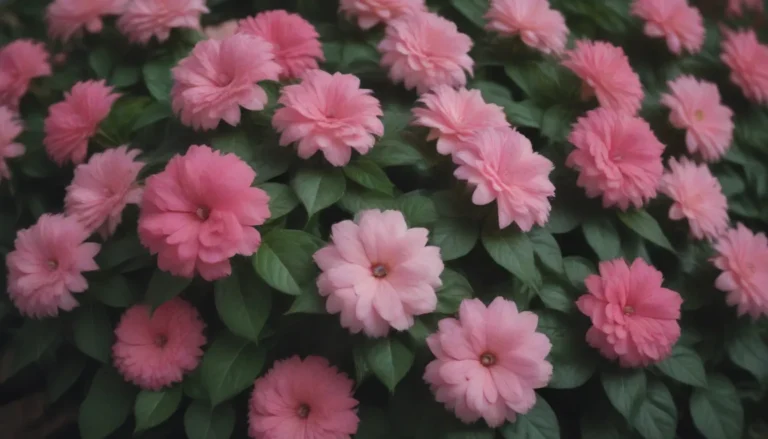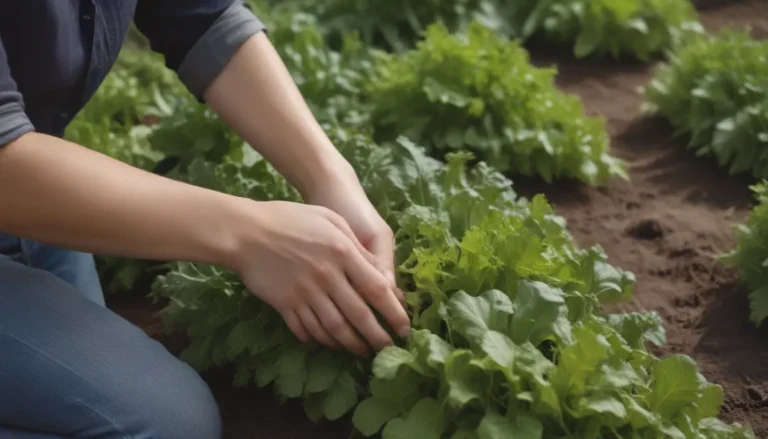Thorough Guide to Herbaceous Plants: Origins, Characteristics, and Care

Welcome to our in-depth guide on herbaceous plants, where we will delve into the definition, characteristics, examples, and care tips for these versatile and vibrant plants. Whether you are a seasoned gardener or just starting out, understanding herbaceous plants can enhance your landscaping efforts and appreciation for nature.
Understanding Herbaceous Plants
Herbaceous plants can be easily identified by their non-woody stems, which sets them apart from their woody counterparts. These plants have above-ground growth that largely or entirely dies back in winter in temperate zones, but they often have underground plant parts such as roots, bulbs, or rhizomes that survive and store food reserves for the plant’s future growth.
What Are Herbaceous Plants?
Herbaceous plants are characterized by flexible, green stems with few to no woody parts. While most annuals and biennials fall under the herbaceous category, many perennials can also be classified as herbaceous. In essence, herbaceous plants encompass a wide range of plant types, from short-lived annuals to long-lasting perennials.
“Annuals take it a step further and die altogether at the end of their lone growing season, both above the ground and below it,” says gardening expert, Jane Smith. Herbs such as basil, dill, and cilantro are classic examples of herbaceous annuals. On the other hand, perennials like peonies and banana plants exemplify herbaceous plants with longer lifespans.
Function of Herbaceous Plants
Herbaceous plants play a crucial role in ecosystems by providing food for wildlife, aiding pollinators, enhancing water quality, and adding visual interest to landscapes through their colorful flowers and foliage. These plants are not just decorative; they contribute to the overall health and balance of the environment.
Key Characteristics of Herbaceous Plants
Understanding the key characteristics of herbaceous plants can help you appreciate and care for them better. Here are some defining traits of herbaceous plants:
- Soft and flexible green stems
- Above-ground growth that dies back in the fall
- Underground food storage parts like roots, tubers, rhizomes, bulbs, or corms
- Shorter life cycle compared to woody plants
By recognizing these traits, you can identify herbaceous plants in your garden and tailor your care practices to their specific needs.
Popular Herbaceous Flowers for Landscaping
When it comes to landscaping, herbaceous flowers add a burst of color and texture to any outdoor space. Here are some popular herbaceous flowers commonly used in landscaping:
- Roses: A classic favorite that comes in a variety of colors and blooming patterns.
- Lavender: Known for its fragrant blooms and soothing properties, lavender is a versatile herbaceous plant.
- Daylilies: With a wide range of colors and shapes, daylilies are easy to grow and maintain.
- Coneflowers: These striking flowers attract pollinators and add a pop of color to any garden.
- Black-eyed Susans: A native wildflower that thrives in many climates, black-eyed Susans are easy to grow and maintain.
Herbaceous Perennials: Examples and Care Tips
For gardeners in northern regions, herbaceous perennials are a staple in landscaping. These non-woody plants die back in winter but resurge in spring, thanks to their underground storage organs. Here are some popular examples of herbaceous perennials and tips for their care:
Examples of Herbaceous Perennials:
- Hostas: Known for their lush foliage and shade tolerance, hostas are a popular choice for garden borders.
- Sedum: With succulent leaves and late-season blooms, sedums are drought-tolerant and attractive to pollinators.
- Astilbe: These feathery flowers add a touch of elegance to shady garden spots and attract hummingbirds.
- Peonies: Fragrant and showy, peonies are long-lived perennials that thrive in full sun to part shade.
Herbaceous Plant Care in Northern Climates:
In colder climates, herbaceous perennials may die back to ground level but can still provide interest in the winter landscape. Instead of cutting them down immediately, consider leaving them intact for added insulation and visual appeal. Some herbaceous perennials that benefit from this approach include:
- Grasses: Ornamental grasses add texture and movement to the garden, even when dormant.
- Echinacea: These vibrant flowers retain their seed heads through winter, providing food for birds.
- Salvia: Known for their long blooming period, salvias are attractive to pollinators and add color to the garden.
Remember to complement herbaceous plants with evergreen trees and shrubs for year-round interest in your landscape design. By understanding the unique characteristics and care requirements of herbaceous plants, you can create a thriving and visually appealing garden that changes with the seasons.
Sub-Classes of Herbaceous Plants
Beyond the broad categories of annuals, biennials, and perennials, herbaceous plants can be further classified based on how they store nutrients underground during the winter. These sub-classes include:
- Rhizomatous plants: These plants store energy in underground rhizomes, enabling them to regrow vigorously in spring.
- Tuberous plants: With energy reserves stored in specialized tubers, these plants often produce colorful blooms and foliage.
- Cormous plants: Characterized by swollen corms that store nutrients, these plants are drought-tolerant and low-maintenance.
Understanding the sub-classes of herbaceous plants can help you choose the right varieties for your garden based on their growth habits and care requirements.
Tip:
Other smaller sub-categories of herbaceous plants without flowers include certain ferns, grasses, sedges, rushes, mosses, and even a couple of carnivorous plants. Diversity in the plant kingdom offers a wide range of options for gardeners seeking unique and intriguing additions to their landscapes.
In conclusion, herbaceous plants are a diverse and essential component of ecosystems and gardens alike. By familiarizing yourself with their characteristics, examples, and care tips, you can cultivate a thriving garden filled with color, texture, and natural beauty. Whether you are passionate about gardening or simply enjoy the beauty of nature, herbaceous plants offer endless possibilities for creativity and exploration in your outdoor spaces.





